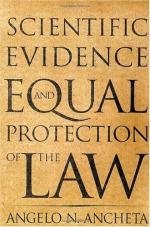|
This section contains 2,603 words (approx. 9 pages at 300 words per page) |

|
It should be noted at the outset that the provision for the equal protection of the law in the United States, set forth in the Fourteenth Amendment of the U.S. Constitution, applies only to discrimination that results from the actions or policies of governments. Purely private discrimination cannot be prosecuted under the Fourteenth Amendment (although it may be reached in limited circumstances by other means). The Equal Protection Clause of the Fourteenth Amendment (ratified in 1868 as a consequence of the Civil War, which ended in 1865) seemed to offer the prospect of protecting former slaves against discriminatory state laws. In fact, with only a few exceptions, it provided little effective protection against racial discrimination until the period following World War II (1939–1945). The principal obstacle was the Supreme Court's decision in Plessy v. Ferguson (1896), which established the "separate but equal" doctrine...
|
This section contains 2,603 words (approx. 9 pages at 300 words per page) |

|


